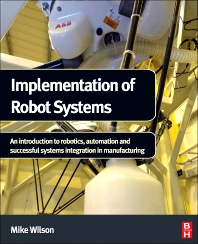Books in Robotics and industrial automation
Books in Robotics and industrial automation

Spaceflight Mechanics and Control
- 1st Edition
- Houman Hakima + 1 more
- English

Internet of Things (IoT) - An Engineering Approach
- 1st Edition
- Xicai Yue
- English

Control and Game Theoretic Methods for Cyber-Physical Security
- 1st Edition
- Aris Kanellopoulos + 3 more
- English

Factory Communications
- 1st Edition
- Architecture Technology Architecture Technology Corpor
- English

Path Planning for Vehicles Operating in Uncertain 2D Environments
- 1st Edition
- Viacheslav Pshikhopov
- English

Overview of Industrial Process Automation
- 2nd Edition
- K.L.S. Sharma
- English

Motion Control Report
- 1st Edition
- Architecture Technology Architecture Technology Corpor
- English

Advances in Automotive Control 1995
- 1st Edition
- L. Guzzella + 1 more
- English

Implementation of Robot Systems
- 1st Edition
- Mike Wilson
- English

Safety, Reliability and Applications of Emerging Intelligent Control Technologies
- 1st Edition
- T.S. Ng + 1 more
- English